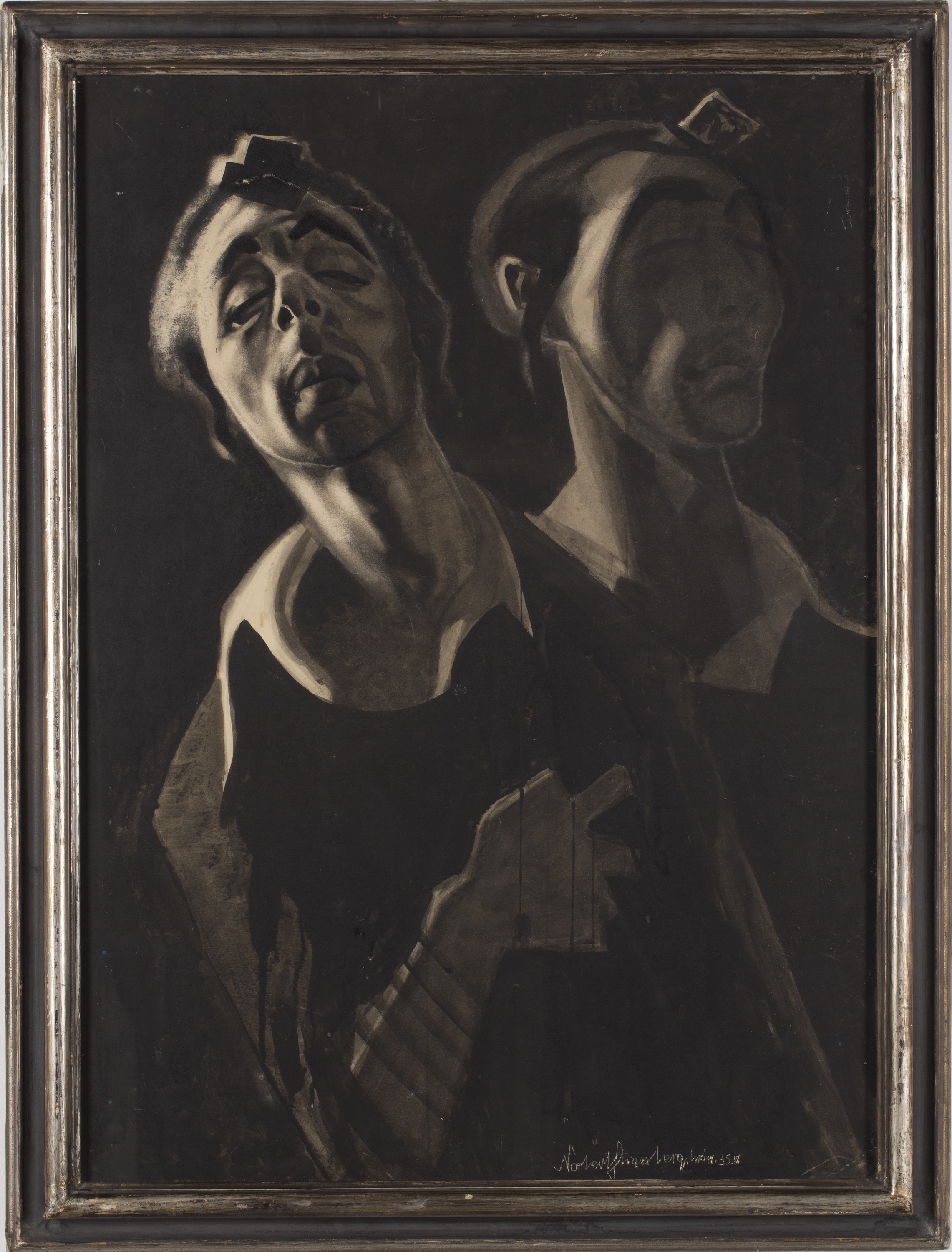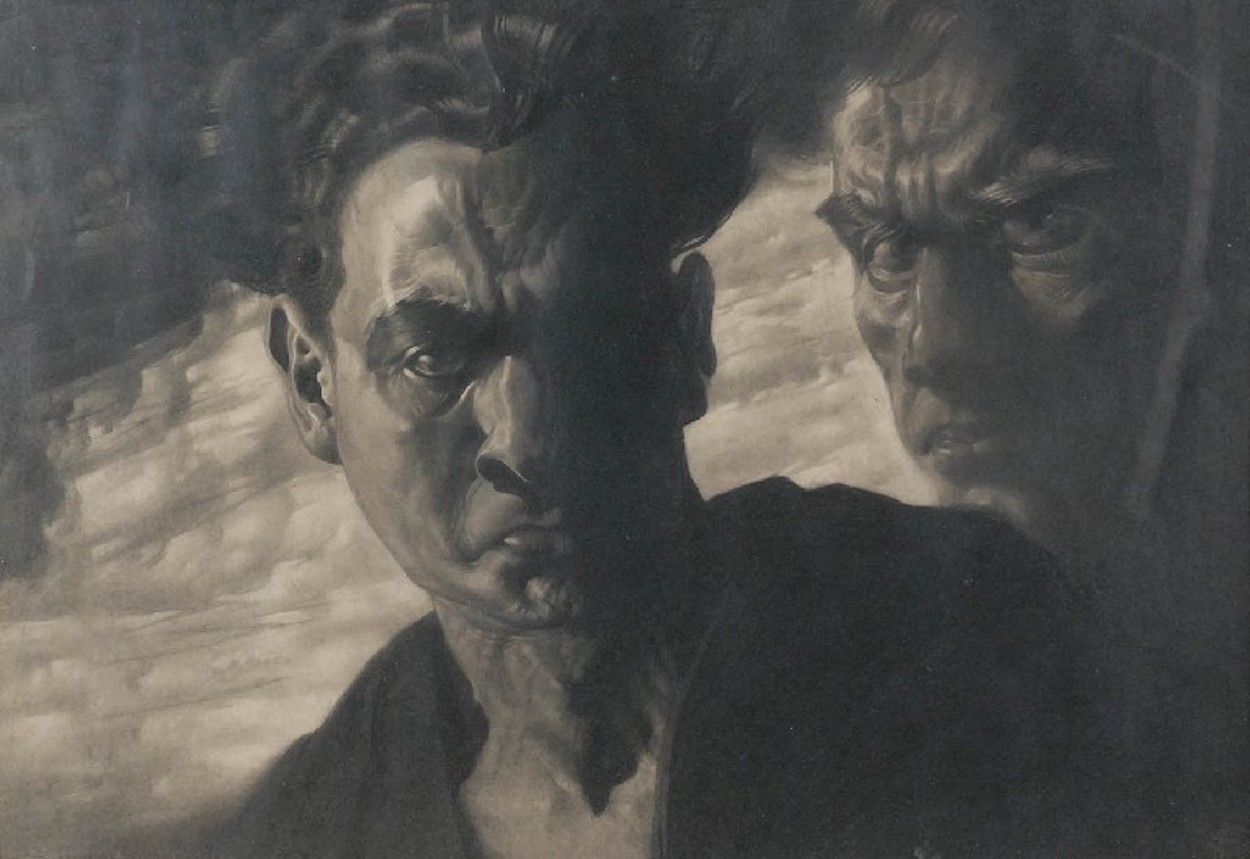Norbert Strassberg (1911–1941) was born into the family of a poor Jewish tailor. He studied at the State Industrial School, where his talents were discovered by Kazimierz Sichulski, an outstanding Polish painter and graphic artist who became Strassberg’s mentor. He also attended the Free Academy of Fine Arts in Lviv. Having moved to Kraków, he met Stanisław Szukalski, the founder of the Szczep Rogate Serce artistic group, who instilled his students with the fascination with Slavic and folk pagan mythology. Strassberg’s acquaintance with Szukalski and active involvement in the group were instrumental to the development of his talent and artistic output, which was largely indebted to historical and literary sources. He took inspiration from religious and biblical motifs.
Strassberg used black ink or pencil to create his genre scenes, depicting boys studying at the yeshiva or Jewish inhabitants of small towns. Portrait studies are some of the most important works in his oeuvre; he would use real people as models or paint anonymous male heads.
One of the few preserved compositions from his extensive artistic output is a double portrait depicting two young, similar looking Jews experiencing profound religious ecstasy (1935), with tefillin on the forehead and right arm. The portrayal stands against religious laws, as the tefillin should be placed on the left forearm (closer to the heart); this indicates that the praying man is left-handed. Perhaps the work is a double portrait of the artist himself. It exemplifies his strategy of introducing strong contrasts—the bright right profile of the man stands out starkly against the dark, almost entirely black background. The piece, with its diagonal composition and assured, energetic strokes, gives off an impression of internal power and dynamism and seems to burst at the edges of the rectangular piece of paper glued onto cardboard.
- Teresa Śmiechowska
P.S. You can see more Jewish artworks on the Delet Portal and also read a story of Charlotte Salomon, who was an outstanding Jewish woman artist.


 Norbert Strassberg
Norbert Strassberg